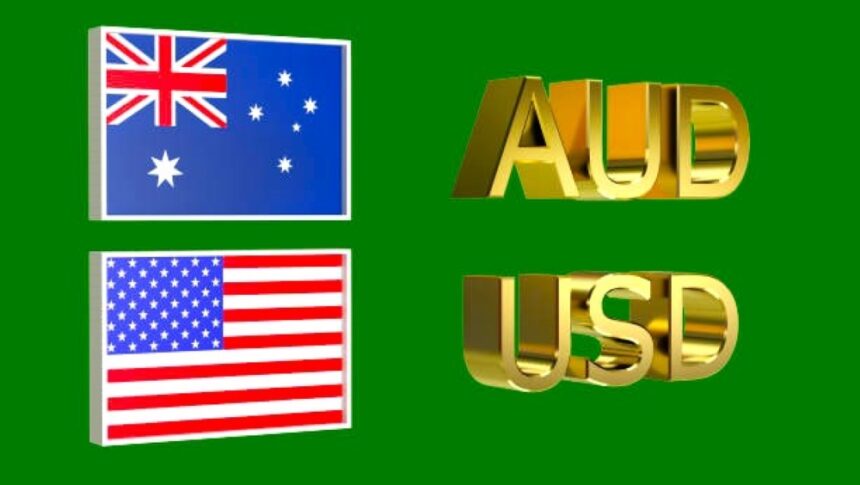Australian Dollar Rises Following Previous Day’s Losses.
The Australian Dollar (AUD) climbed on Wednesday, reversing a portion of the losses it endured earlier in the week. After sliding more than 0.50% in the previous session, the AUDUSD pair found fresh bullish momentum, buoyed primarily by a weakening US Dollar (USD). This recovery is especially notable given the Reserve Bank of Australia’s (RBA) unexpected decision to cut rates on Tuesday, which would typically weigh on a currency’s value.
The AUD/USD pair’s resilience underscores the market’s broader reassessment of global central bank trajectories and trade policy concerns, especially as Federal Reserve officials continue to sound the alarm on the US economic outlook.
Federal Reserve Caution Dampens USD Appeal
Recent remarks by prominent Fed officials have significantly affected USD sentiment. Cleveland Fed President Beth Hammack and San Francisco Fed President Mary Daly expressed heightened concern over the deterioration in both consumer and business confidence in the United States. Their remarks, made during a panel hosted by the Federal Reserve Bank of Atlanta, hinted that the broader economic outlook might not be as solid as recent data had suggested.
Although core economic indicators remain somewhat stable, both Hammack and Daly linked the erosion in sentiment to uncertainty surrounding US trade policy. Their comments suggest that US policymakers are increasingly worried that prior and ongoing trade decisions, especially those reintroduced under the Trump administration, could undermine business planning and consumer confidence.
Trump-Era Tariffs Return to the Spotlight
Atlanta Fed President Raphael Bostic added weight to this concern by explicitly calling out the potential consequences of erratic tariff policies. Speaking on Tuesday, Bostic warned that the Trump administration’s trade approach, marked by inconsistent tariff application, risked damaging the intricate logistics chain underpinning the US import-dependent economy.
The broader implication is clear: the Federal Reserve sees trade instability as a direct threat to the US growth outlook, making a case for potential interest rate cuts in 2025. This dovish shift in expectations has, in turn, pushed the USD lower across several currency pairs, including AUD/USD.
Moody’s Downgrade of US Credit Rating Fuels USD Weakness
Adding to the US Dollar’s troubles was a significant credit rating downgrade by Moody’s Investors Service. On Tuesday, the agency lowered the US long-term issuer rating from Aaa to Aa1, citing long-term fiscal risks. This move aligns with similar downgrades issued by Fitch in 2023 and Standard & Poor’s back in 2011.
Moody’s now projects that the federal debt-to-GDP ratio will rise sharply to around 134% by 2035, compared to 98% in 2023. Contributing factors include rising debt-servicing costs, the expansion of entitlement programs, and a persistent decline in tax revenues. The budget deficit is also forecast to grow to nearly 9% of GDP, a level considered unsustainable in the long term.
This downgrade prompted an immediate market reaction, dragging down US bond yields and the Dollar, while lifting risk-sensitive assets like the Australian Dollar.
RBA Cuts Rates to 3.85%, But Maintains Proactive Stance
Despite the currency’s appreciation, the Reserve Bank of Australia (RBA) delivered a surprise policy move by cutting its Official Cash Rate (OCR) from 4.10% to 3.85%. RBA Governor Michele Bullock defended the cut as a preemptive, confidence-boosting step, arguing it aligns with the current economic landscape. Bullock emphasized the central bank’s flexibility, stating that the Board remains open to further adjustments should conditions warrant.
Interestingly, the market interpreted Bullock’s tone as cautious rather than outright dovish. The central bank’s insistence on controlling inflation and its readiness to act again helped limit the downside impact on the Australian Dollar.
Political Shake-Up in Australia Supports Australian Dollar
In addition to central bank policy, domestic political developments have influenced the Australian Dollar’s performance. The National Party’s sudden exit from its alliance with the Liberal Party effectively dissolved the opposition coalition, creating a political vacuum.
The ruling Labor Party capitalized on the disruption to consolidate its power, unveiling a robust and progressive agenda that includes expanded infrastructure investments and targeted subsidies aimed at boosting productivity. The market welcomed the political clarity, and this stability provided added support to the AUD.
China’s Response to US Trade Moves Helps Risk Sentiment
Wednesday also saw renewed friction in US-China relations after China’s Commerce Ministry criticized US measures on advanced semiconductor exports. Calling them “typical of unilateral bullying and protectionism,” the Chinese government signaled its intent to escalate investigations into the US’s trade practices.
Paradoxically, the heightened tensions may be fostering hopes for a resolution. A temporary 90-day trade truce between the two economic superpowers has rekindled optimism in global markets. Risk-sensitive currencies like the AUD typically benefit from such easing of tensions, especially when paired with hopes of further multilateral trade agreements involving Australia.
PBoC Eases Monetary Policy to Support Chinese Economy
The People’s Bank of China (PBoC) also added momentum to the risk rally by trimming its Loan Prime Rates (LPRs) on Tuesday. The one-year LPR was lowered from 3.10% to 3.00%, while the five-year LPR was cut from 3.60% to 3.50%. This was seen as an effort to counter slowing domestic growth, especially after April’s economic data missed expectations.
According to the National Bureau of Statistics (NBS), Chinese Retail Sales rose 5.1% year-over-year in April, falling short of the forecasted 5.5% and down from March’s 5.9%. Industrial Production, meanwhile, grew 6.1%, beating forecasts but slowing from March’s 7.7%. The PBoC’s action suggests policymakers are willing to do more to ensure a soft landing, which indirectly supports Australia’s trade-dependent economy.
Strong Australian Employment Data Lifts Economic Outlook
Domestically, Australia’s labor market remains a bright spot. The Australian Bureau of Statistics (ABS) reported that employment surged by 89,000 in April, far exceeding expectations. This marks a sharp rise from March’s 36,400 increase and comfortably beats the forecasted 20,000 gain.
Importantly, the unemployment rate held steady at 4.1%, indicating that labor market conditions remain tight. The strength of the jobs market provides a solid foundation for consumer spending, which should help offset the impact of rate cuts and support broader economic growth.
Australian Dollar Likely to Stay Supported Amid Global Uncertainty
Looking ahead, the AUDUSD pair may continue to find support as long as global uncertainty lingers. The combination of a dovish Fed, weaker US economic outlook, and Australia’s relative political and economic resilience puts upward pressure on the pair.
However, further gains in AUDwill likely hinge on the evolution of US-China relations, incoming inflation data, and RBA forward guidance. While the RBA has not ruled out more cuts, the strong labor market and proactive fiscal policy may delay such moves. At the same time, markets are betting that the Fed could begin cutting rates by the third quarter of 2025 if economic sentiment continues to deteriorate.








